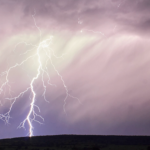Beach chair? Check. Sun tan lotion? Check. Roof summer ready? It will be once you inspect it for the temperature extremes and heavy summer storms that make Maryland’s and Pennsylvania’s weather as unpredictable as it is unique. Regular roof inspections will catch most minor roofing problems before they become costly repair issues. While we will perform a professional roof inspection for any commercial or residential property, there are a few things you can do to help summer-proof your roof. Here is a complete roof inspection checklist for summer.
A Summer Roof Inspection Starts Inside
Many times, roof issues make themselves known long before you climb on the roof to inspect it. Check for signs of leaks inside, including:
- Bulging patches on interior wall surfaces
- Spots on the ceiling or walls
- Peeling or bulging paint
- Musty odors
- Mold or mildew formation on the ceiling
- Obvious wet spots on the ceiling, walls, or floor
It’s important to remember that water can do crazy things and travel in unexpected directions. Just because you see signs of a water leak doesn’t mean the source of the leak is directly above it. In fact, water can travel inside walls and exit somewhere in the basement or first floor. Check all levels of your home for signs of water damage.
If you see signs of a leak, contact a professional immediately. Delaying repairs can cause extensive damage to your home’s structural integrity and be the foundation for mold, mildew, and bacteria.
Inspect the Attic or Crawlspace
It’s time to get up in the attic or crawlspace and check on the condition of your insulation and ventilation systems. Check for signs of water damage, blocked vents, animal droppings or carcasses, and nests.
Signs of water damage could indicate roofing issues, while signs of animal habitation inevitably means there is access to your home through the eaves, ventilation systems, or the roof.
Check Your Eaves
The eaves are a prime spot for rot and pest infestation. Rodents can find entry to your attic or crawlspace through remarkably small holes, and as anyone who has had an unfortunate encounter with wasps and hornets will tell you, they are also a favorite spot for insects and pests to build nests. If you have less than 12”–15” of insulation, it’s time to add some more.
Check for signs such as gnawed wood, holes, sawdust on the ground, or lingering insects in and around your eaves. This is also the chance to address any chipped, peeling paint you see; a fresh coat of exterior paint will help protect your eaves from water damage.
Trim the Trees
You may spot trees that have limbs hovering over, or even touching, your roof. In windy conditions these branches blow back and forth, damaging your shingles. These branches also shed leaves onto the roof and into your gutters, allow a “bridge” for insects to travel from the tree to your roof, and have the potential to break off and cause even more damage to your roof.
Professionals recommend that tree branches be cut back six to ten feet away from the roof. Stay safe, and hire a professional tree service to handle this for you.
Gutter Inspections
Are your gutters still channeling water away from your home? Any gutter that is cracked or leaking needs to be repaired or replaced. Look for areas where it seems water is pooling (other than your downspout); if you see these areas, chances are your gutters need attention.
Clear all debris, such as nests and leaves, from your gutter channels. If you find yourself on the ladder cleaning the gutters too often, you may want to think about upgrading to a leaf block system.
Inspect Shingles
Starting on the ground, walk around the house and look for signs that your shingles are starting to lose integrity. Some of these signs include:
- Curling shingles
- “Bald” spots on shingles (missing granules)
- Cracked shingles
- Missing shingles
Your ground inspection should focus on the overall roof condition, but pay special attention to shingles at the edges of your roof and eaves.
Repair Flashing
Many roof repairs involve replacing or fixing the flashing (metal around chimneys and vents). Chances are you noticed the effects of faulty flashing already; water stains around the chimney, for instance.
Carefully inspect the flashing, making sure it’s still structurally sound and not peeling away.
Clean the Roof
You’ve probably noticed discoloration on your shingles. This is usually because of algae and fungus formation. It’s a good idea to clean the roof annually by removing all sticks, leaves, and other debris before rinsing it down with a 50/50 mixture of bleach and water or a commercial grade roof cleaner.
Use caution before deciding to pressure wash your roof. The high-powered jets can cause damage to your shingles.
Check Your Previous Repairs
Oftentimes, an improperly repaired roof will return to haunt the homeowner again within a year or two. If you know you had a roof patch or other repair, check the integrity of it to make sure it’s still holding up.
Don’t Like Ladders? Call a Professional
A professional roofing contractor can provide comprehensive roof inspections that will uncover potential problems, provide you with tips to maintain the health of your roof, and even give you an estimate on your roof’s remaining lifespan.
Most roofing professionals recommend an inspection every other year, but having an annual inspection improves your odds of uncovering minor issues before they become big repairs.













